It’s essential to have the correct RH technique in order to improve in your playing. First we must focus on the right hand and the proper technique associated with it.
Having proper technique will make playing much easier and allow you to play more challenging repertoire and exercises.
Fingers and Strings
Thumb should be on the sixth, fifth, and fourth strings while the index middle ring will be on the third, second and first strings.
P = 6, 5, 4
I = 3
M = 2
A = 1
Right hand positioning
The right hand should be hovering over the sound hole in the middle. You can also place it back slightly as well for a different timbre. Make sure the right hand is relaxed while hanging over the strings.
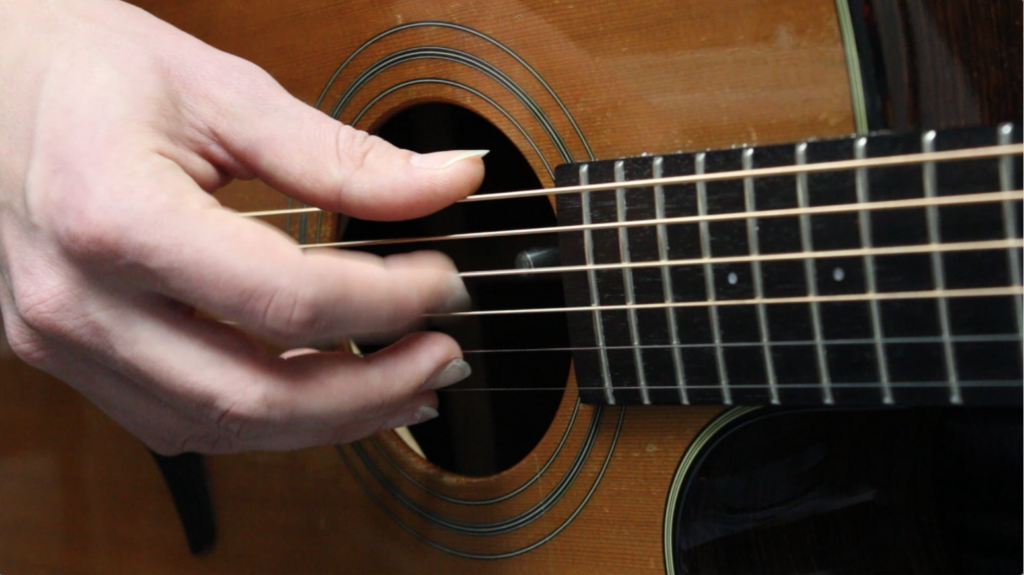
Attack motion
The attack should be a motion of the fingers coming in towards the palm. Prevent yourself from plucking up, or a clawing attack, which will cause the strings to be bright and thin.
Here is a video on beginner finger picking patterns I recommend:
Practice this with your own songs, or solely to work on your technique in order to improve your playing.
Learn more about technique through our FREE Fingerstyle Workbook!
FOLLOW US ON
Get our FREE Fingerstyle Workbook!
RELATED BLOG POSTS
Guitar Timing Practice
Timing is a crucial aspect of playing the guitar, as it allows you to play in sync with other musicians and create a cohesive and tight sound. By practicing timing exercises regularly, you can improve your sense of rhythm, develop your internal clock, and enhance your ability to play with precision and groove.
To start practicing timing on the guitar, begin by playing along with a metronome or drum machine. Start at a comfortable tempo and focus on playing precisely on the beat, in time with the click. Gradually increase the tempo as you become more comfortable with the exercises.
Next, work on developing your internal clock by practicing rhythmic subdivisions and syncopated patterns. Focus on playing evenly and smoothly, maintaining a steady pulse throughout the exercises. Practice counting out loud or clapping along to the rhythm to improve your sense of timing.
You can also practice timing exercises by playing along with backing tracks or songs in different styles and genres of music. This will help you become more familiar with different rhythmic patterns and improve your ability to play in a variety of musical contexts.
By incorporating timing exercises into your daily practice routine, you can improve your sense of rhythm, develop your internal clock, and enhance your overall musicality on the guitar.
Guitar Speed Building Exercises
Building speed on the guitar is a common goal for many players, as fast and fluid playing can add excitement and energy to your music. By practicing speed-building exercises regularly, you can improve your dexterity, accuracy, and overall technical proficiency on the instrument.
To start building speed on the guitar, begin by practicing scales and arpeggios at a comfortable tempo, focusing on clean and even articulation. Use a metronome to help maintain a steady tempo and gradually increase the speed as you become more comfortable with the exercises.
Next, work on developing muscle memory by practicing repetitive patterns and sequences. Start slowly and gradually increase the tempo, focusing on smooth and controlled movements. Be sure to maintain proper form and technique to avoid injury and ensure efficient playing.
You can also practice speed-building exercises using techniques such as hammer-ons, pull-offs, and alternate picking. These techniques can help you improve your overall speed and fluidity on the guitar by promoting efficient and economical movements.
By incorporating speed-building exercises into your daily practice routine, you can improve your dexterity, accuracy, and overall technical proficiency, becoming a more versatile and expressive player.
Guitar Finger Exercises
Finger exercises are an essential part of developing strength, flexibility, and coordination in your hands for playing the guitar. By practicing finger exercises regularly, you can improve your dexterity, speed, and overall technical proficiency on the instrument.
To start practicing finger exercises, begin by warming up your hands with simple stretches and finger rolls. This will help prevent injury and improve circulation in your hands and fingers. Next, work on individual finger exercises to strengthen each finger independently.
One of the most popular finger exercises for guitar players is the four-finger chromatic exercise. Start by placing your first finger on the first fret of the low E string and play all four fingers in sequence, moving up one fret at a time. This exercise will help develop strength and independence in each finger.
You can also practice finger independence exercises, such as playing different finger combinations on adjacent strings or playing scales with strict alternate picking. These exercises will improve your ability to coordinate your fingers and enhance your overall technique on the guitar.
By incorporating finger exercises into your daily practice routine, you can improve your finger strength, flexibility, and coordination, becoming a more confident and proficient player.
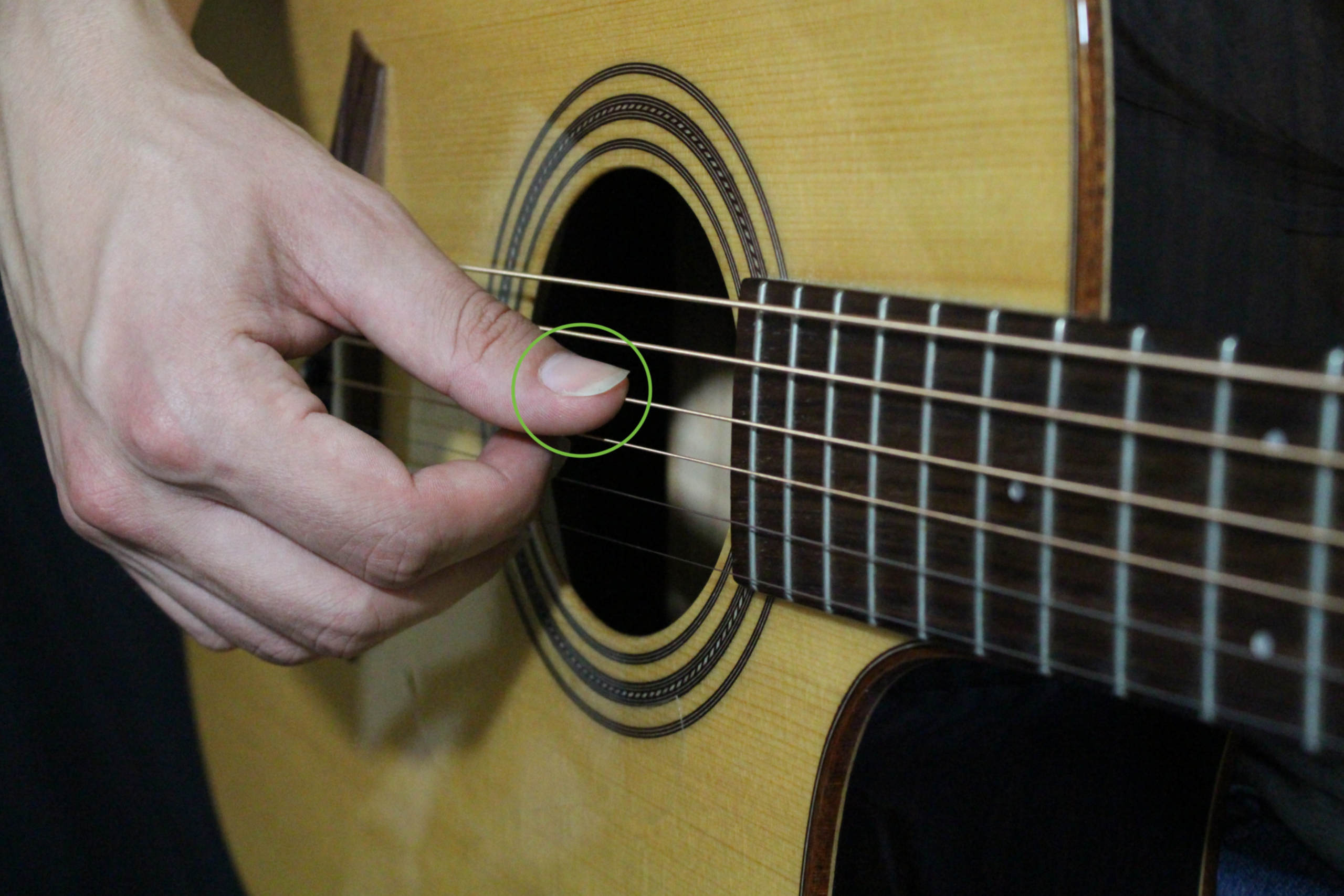
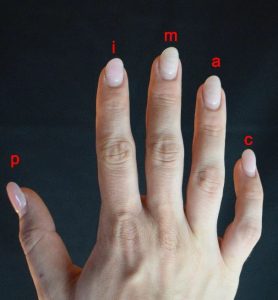
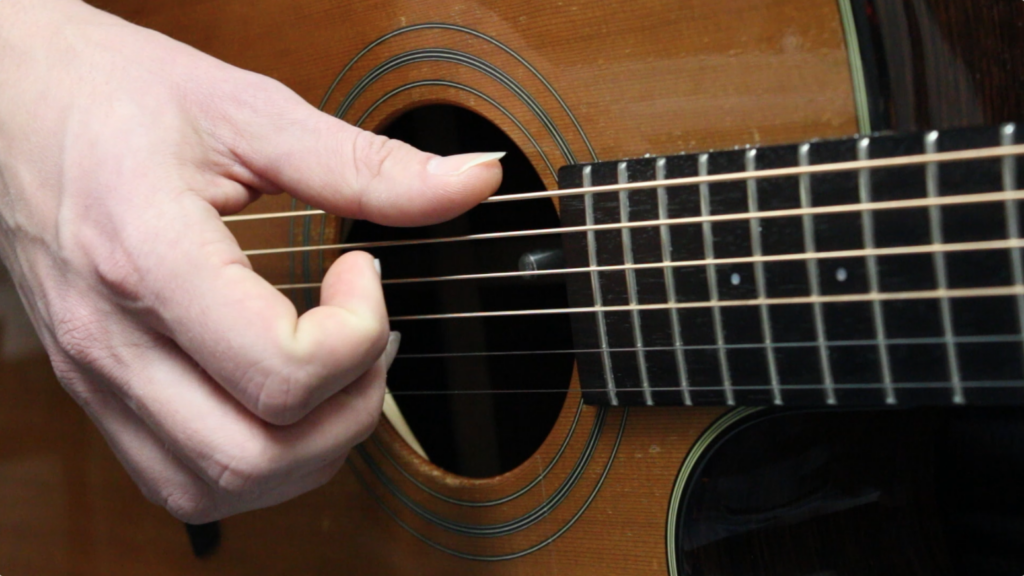
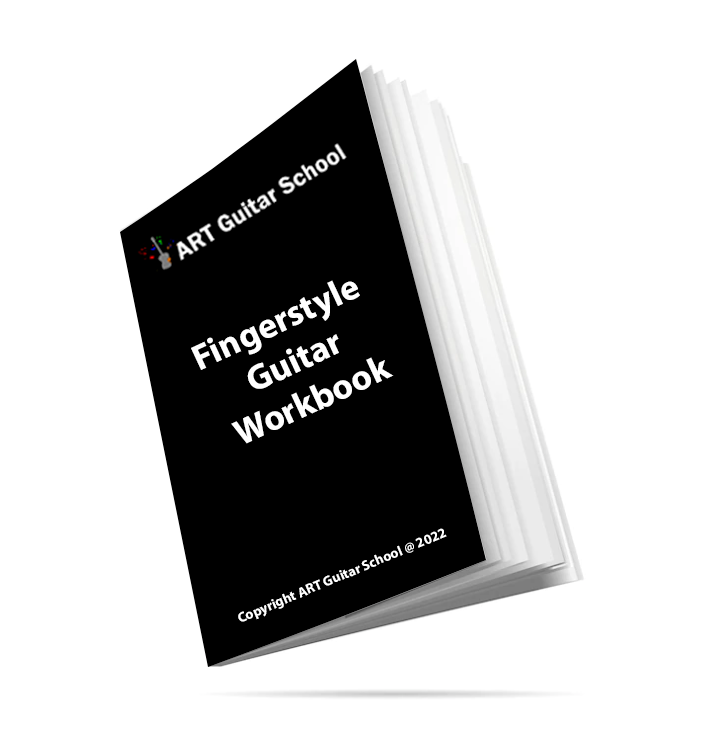
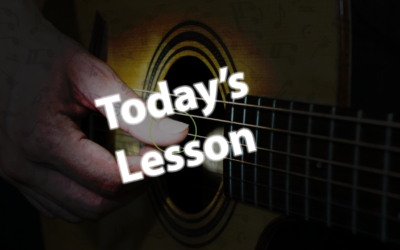
0 Comments